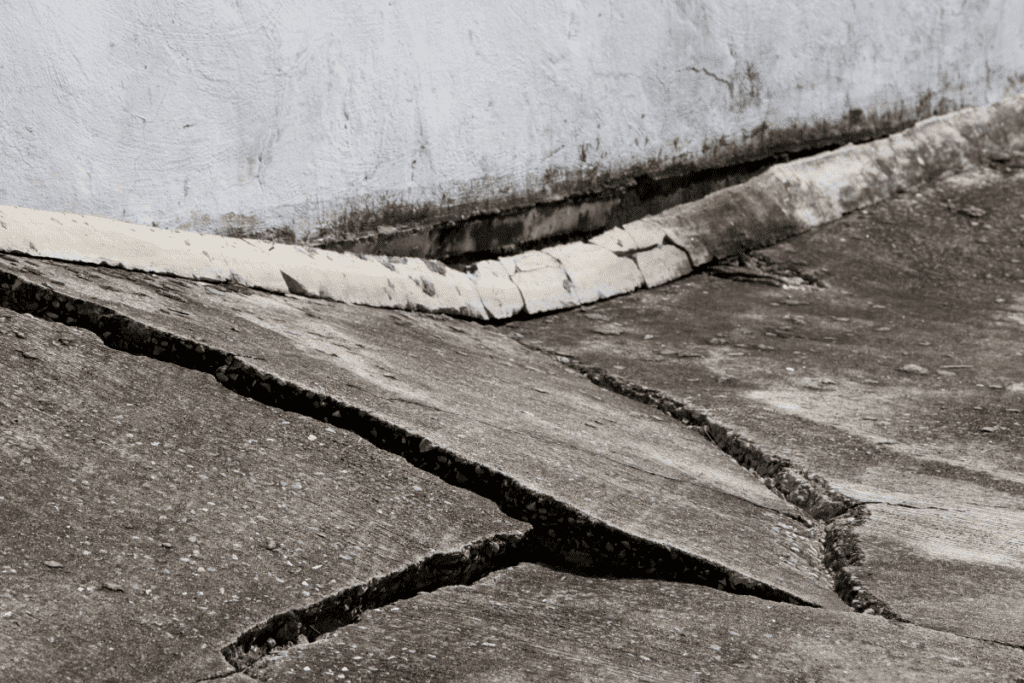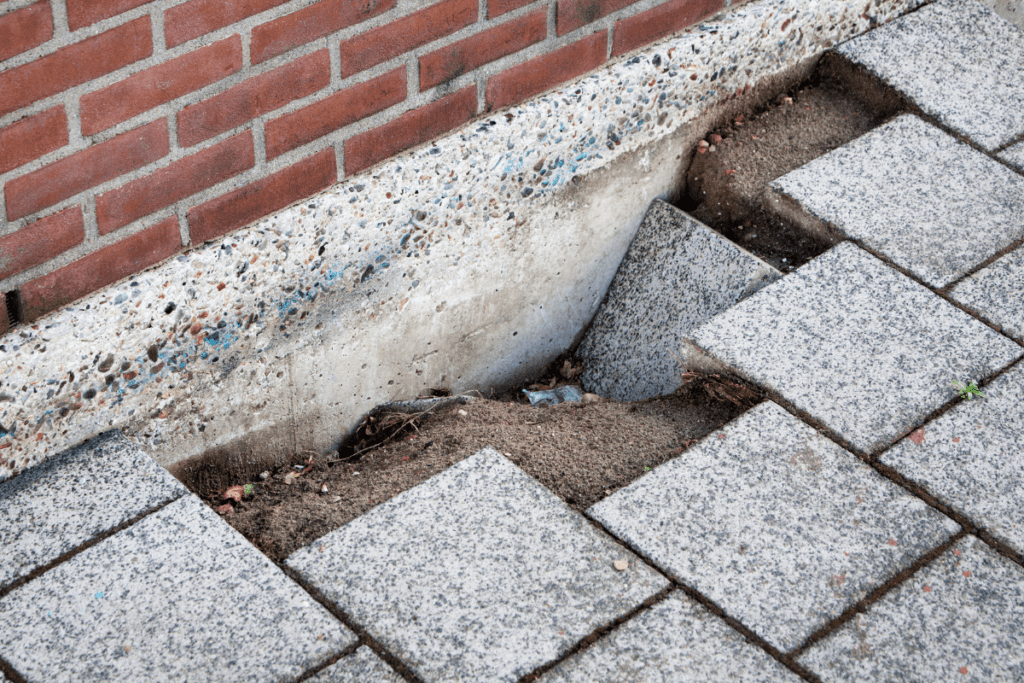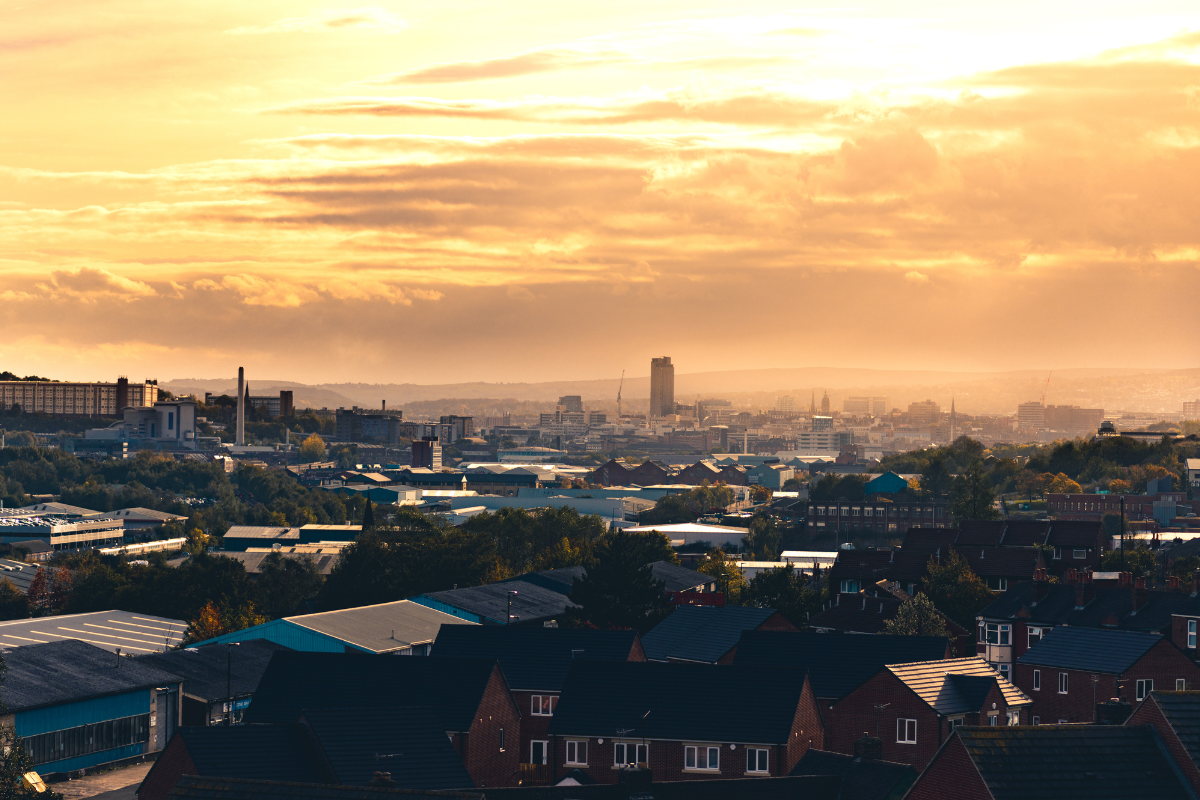Subsidence is a significant issue for homeowners, particularly for those residing in regions prone to ground movement. When the ground beneath a structure shifts, it can cause the building’s foundation to sink or settle, leading to severe structural damage. It can be expensive to repair this level of damage, and in some cases, the property may become uninhabitable. That’s why it’s important to understand what causes subsidence and how to spot the signs! Find out more about the risks, signs and causes of subsidence below, as well as what to do if you suspect subsidence in your home.
What is subsidence?
Subsidence, in the context of properties, refers to when the ground beneath a property sinks, causing a shift in the building’s foundations. As the ground descends, it can lead to the misalignment of the house’s foundation, which may manifest as structural issues in the building. Such problems are especially pronounced when different parts of the ground under the property sink at varying rates.
The onset of subsidence can result in noticeable cracks in walls, misalignment of doors and windows, and in severe cases, can jeopardise the overall structural integrity of the building. Factors such as water leaks, drought conditions, the growth of tree roots, and past mining activities are among the common causes of subsidence (but see more below).
Subsidence tends to occur in older properties, but it’s not unknown to new builds that are settling in to their foundations too. Although there’s a limit to what you can do to prevent it, keep reading to see how you can spot the signs of subsidence as well as what to do if you think you have any.
What causes subsidence?

Various factors can lead to subsidence, such as fluctuations in soil moisture, underground cavities or voids, and specific geological features like certain rock types. However, the most common cause of subsidence is the extraction of underground water. Pumping water from the ground can cause soil to dry and compact, resulting in shrinking and settling. This may then create cracks in the ground, which in turn can affect the building’s foundation.
Other contributing factors include heavy rainfall, leading to soil erosion, and the presence of trees that absorb large quantities of water from the soil.
Based on data collated by the Association of British Insurers (ABI), the primary causes of subsidence that impact houses in the UK in 2023 include:
- Root Induced Clay Shrinkage (60%): Tree roots can absorb moisture from the clay soil, causing it to shrink and leading to the sinking of the ground beneath houses.
- Running Water from Leaking Drains (18%): This can wash away the soil underneath, leading to a drop in ground level beneath properties.
- Poor Ground, Infill, and Consolidation Issues (18%): These relate to the quality and type of soil and materials beneath houses, affecting their stability.
Where does the most subsidence occur?
Subsidence affects the ground underneath a property, causing it to collapse and impact the building’s foundations. When subsidence occurs, one side of the house tends to sink, leading to the appearance of cracks. This implies that subsidence does not affect one specific part of a house, like a particular room or section, but rather the foundations of the entire property. When the ground beneath a house sinks, the foundations can become misaligned. The resulting damage becomes especially problematic when the ground sinks at different rates beneath different parts of the property, causing uneven settling. Therefore, while the initial signs of subsidence may appear on one side or corner of a house, such as visible cracks in walls or misaligned doors and windows, it’s essential to understand that the issue originates in the ground below the house and can impact the entire structure.
What are the risks and dangers of subsidence?
Homeowners face several risks and dangers due to subsidence. The most apparent threat is the potential for significant structural damage, which can manifest as cracks in walls, floors, and ceilings, as well as issues with doors and windows that no longer fit correctly. In extreme cases, the damage may render the property unsafe for habitation.
Additionally, subsidence can adversely impact a property’s value, making it more challenging to sell or rent, and insurance companies may decline coverage for properties with a history of subsidence.
For more on how problems like subsidence can impact a property, our blog on the symmetry between buildings and human bodies demonstrates the interconnectivity of all areas and how issues can be detrimental to the entire building.
What does subsidence look like in a house and how to spot signs of it?

Spotting signs of subsidence is crucial to avoid any significant damage. Here are some of of the most common signs that might indicate subsidence in your home:
- cracks in walls, particularly those wider at the top or diagonal
- uneven or sloping floors
- doors and windows that stick or don’t close correctly
- rippling or bulging wallpaper
- a leaning or tilting chimney.
It’s essential to seek expert help promptly if you notice any of the above signs of subsidence. A qualified building surveyor or structural engineer can then determine whether your home is affected and advise on the best course of action.
What can homeowners do to protect their properties?
Homeowners can take several steps to protect their properties from subsidence. Firstly, understanding the risk factors in their area by consulting a surveyor or geotechnical engineer can help assess the likelihood of subsidence based on local geological conditions. Furthermore, homeowners can reduce subsidence risk by maintaining consistent soil moisture levels around their property, avoiding planting trees or other vegetation too close to the building, and ensuring proper drainage system functionality.
It’s also crucial to have adequate subsidence insurance, which may involve a specialised policy to cover repair costs resulting from subsidence damage.
Address the potential risk factors and spotting the signs early can make a big difference when it comes to protecting your property from subsidence damage. Furthermore, getting expert advice as soon as you suspect subsidence can prevent permanent damage to your property. Statistics show that subsidence claims rose a few years ago, which is attributed to an increase in building surveys commissioned.
If you have any concerns, it’s always best to seek expert advice to get to the root of the problem and the symptoms don’t get worse. Get in touch with CJ Bloor for friendly advice today.




